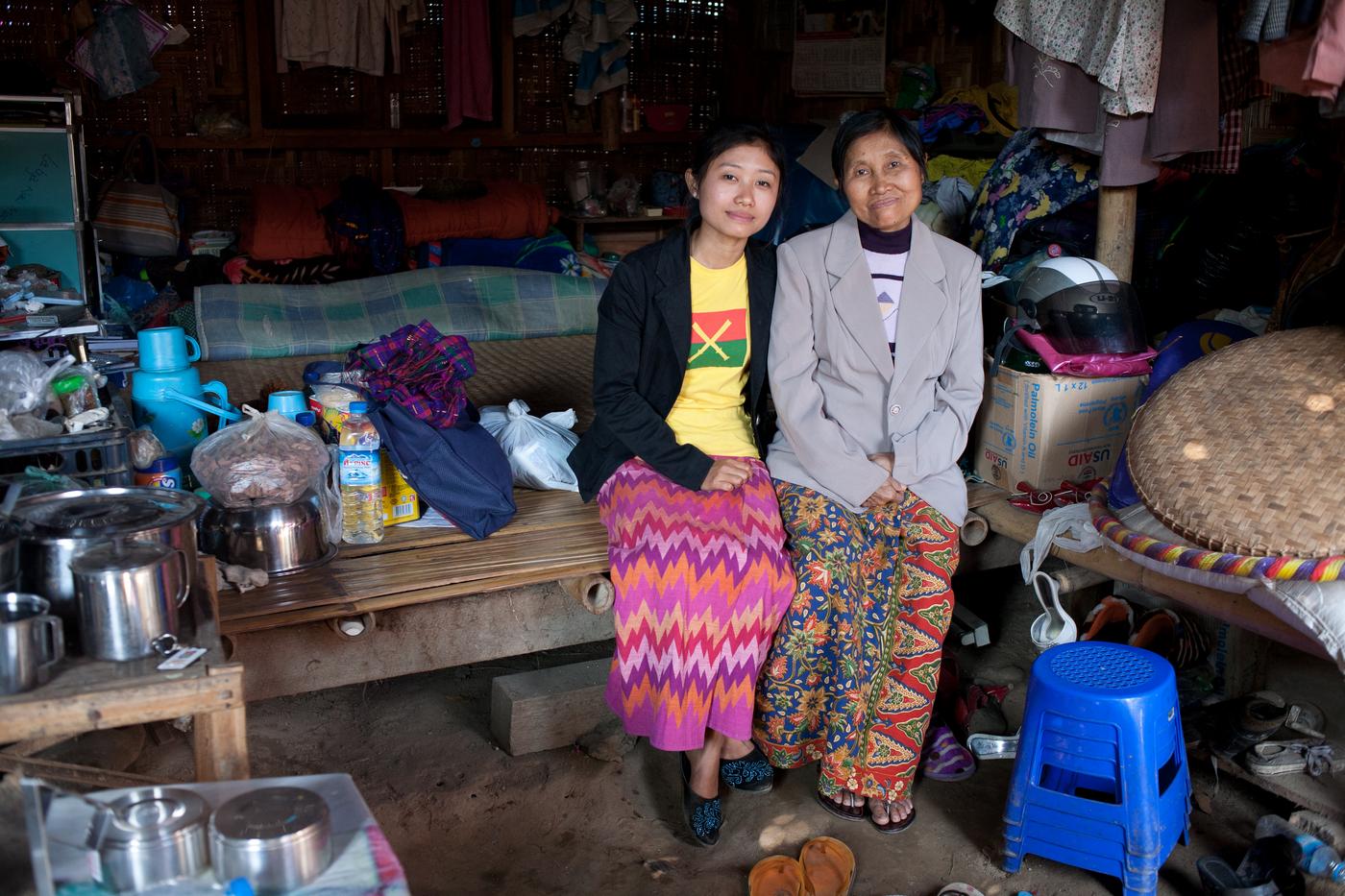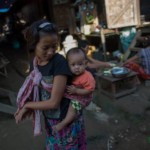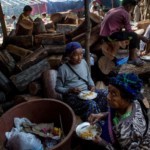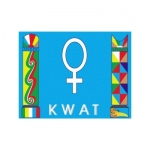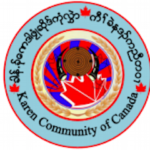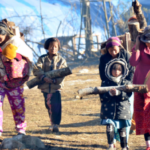By Katy Carlson
Part I – The Reality of Kachin IDPs in Kachin State’s Capital City Myitkyina
In Burma, foreigners can expect many obstacles if they wish to investigate areas of conflict. In most cases, the government defines these places as restricted areas, keeping curious outsiders from witnessing the reality. In Myitkyina, it’s different though. The capital of Kachin State, foreigners are permitted to visit, and especially encouraged during the annual Manau Festival*. What many foreigners are unaware of though, is the number of internally displaced persons (IDPs) that live inside the city. In their urban settings, the 13 IDP camps aren’t immediately noticeable from the road. It’s when you get closer that you notice the WFP, UNHCR and UNICEF logos on the buildings and the cramped quarters that the families are living in.
In the camp of Mali Yang, Labya Ja Ngai, a 25-year-old volunteer told us some of her story and the struggles the IDPs face in the camp. A mere 10 minutes from downtown Myitkyina by motorbike, Mali Yang is home to 71 families and 319 people. The camp is split fairly evenly by gender, with 154 men and 165 women. Nearly half of the camp’s members are students of some kind, ranging from pre-school to university.
Ja Ngai and her family have lived in Mali Yang for four years. Prior to joining the IDP camp, her family of five had lived in the village of Dabak Yang in Waingmaw Township. By western standards, Ja Ngai and her family didn’t have to travel very far to move to the camp- only 30 miles. With the poor roads and thick jungles of Kachin State however, this means a drive of over one hour through ever-changing surroundings.
Ja Ngai told us in Kachin language, “I miss my village so much. Now, we live in the camp, but it’s not like our house. The camp is very small. We depend on them for food. We lost everything that we had.”
Her family wasn’t the only family that lost their homes in the village either. She told us that over 300 families had previously lived in the town where the main livelihood was orange farming. For all of those villagers, the war was right on their doorsteps. “In that year, we could not stay anymore because there was so much fighting in our village. We absolutely could not stay anymore…,” Ja Ngai emphasized when asked how they made the decision to leave.
Rumors of further exploitation of their village make the villagers’ loss even more painful. “Our future is gone, especially now that we heard about government gold mining that is now happening in our village. We are already hurting and now this news is hurting us more.” A Myitkyina local who was present told us that he had traveled near the village just months ago and had found it to be completely destroyed.
While some villagers go back to their villages to visit, they are not allowed to stay overnight. Additionally, anyone wanting to return to visit the village requires permission from the government. Without permission, the government army will likely suspect them of KIA relationships and arrest them. Ja Ngai has never been back and does not have any plans to go.
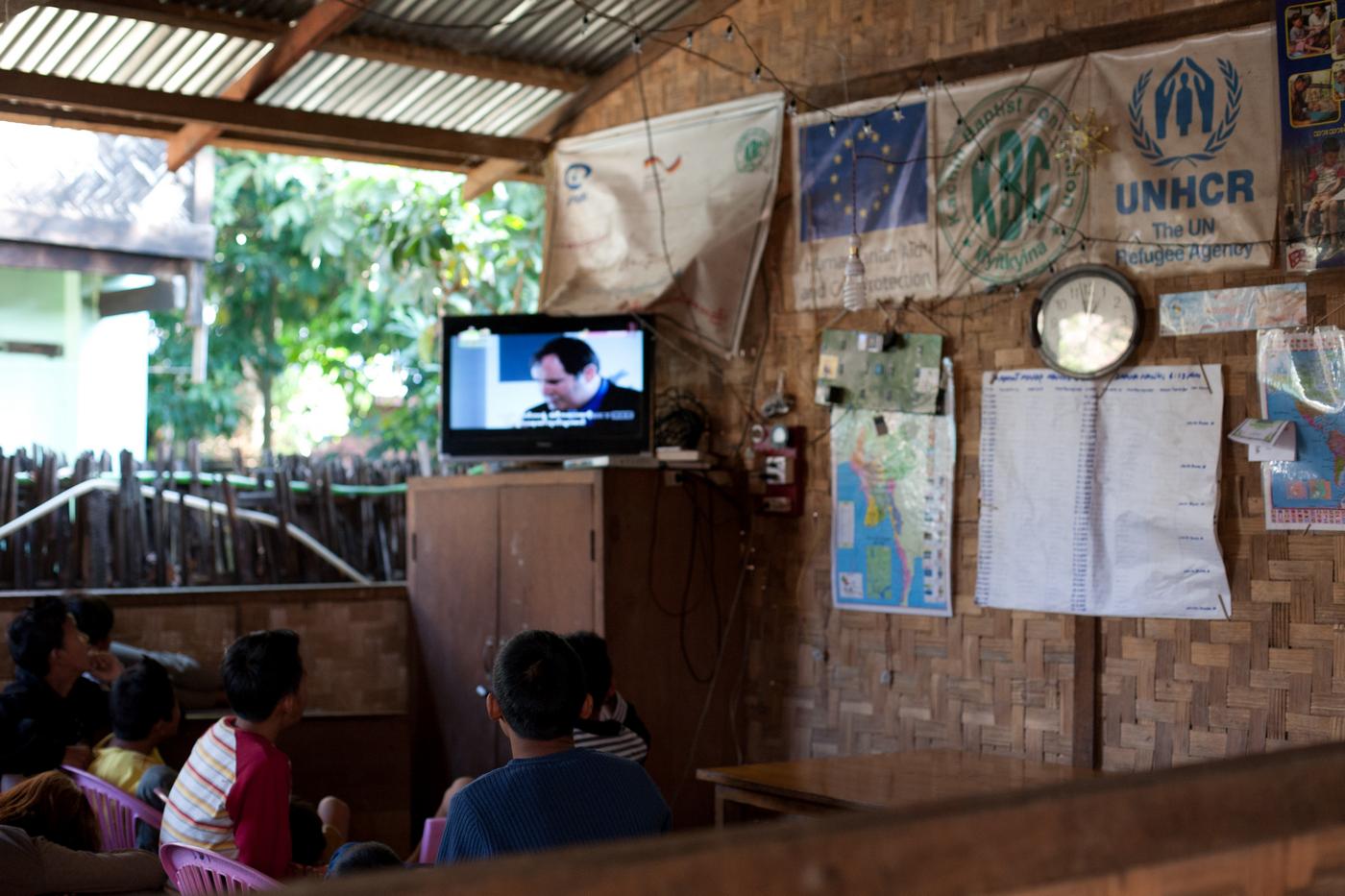
Kachin internally displaced persons (IDPs) watch TV in the Mali Yang camp in Myitkina. (Photo: Katy Carlson)
Part II – The Future of Kachin IDPs in Kachin State’s Capital City Myitkyina
Sitting with us in Mali Yang IDP camp, Labya Ja Ngai told us about her role as a volunteer in the camps. Prior to 2014, she told us, there were enough volunteers that each volunteer took care of only one camp. Now, because of budget cuts, there are only four volunteers and they share the responsibilities together of looking after the 13 camps in Myitkyina.
She explained her broad responsibilities by saying, “We oversee, not only health, disciplinary measures and conflict mediation, but also the mood of the camp and providing support in these places. Sometimes, we provide awareness. In particular, we provide awareness about human trafficking and rehabilitation for those who have been trafficked.”
On a day-to-day basis, however, her job usually focuses on medical attention in the camps. “All four of us help provide transportation to the hospital and funding for medicine. Sometimes we collaborate with other groups that work in the camps.”
Approximately once a month, the volunteers hold meetings in the camps to educate the camp members on their options and the current government policies.
When asked what the current options are, Ja Ngai and our translator explained that, for a family wishing to resettle, “The government announced that they will give 200,000 kyats, or something like that. But really, they never do it like this. … They want to show the international community. They say, ‘Please sign here’ but they never give them the money. So, it’s really difficult to go back to their hometown. Also, 200,000 kyats is not enough money. They have to build their house, they have all their things they have to buy. … But they take a photo and show it on TV. So, they say, ‘Some of the IDP have gone back to their hometowns, see?’.”
When asked about a lasting solution, Ja Ngai immediately offers up the English phrase ‘Durable Solution’. For many Kachin like Ja Ngai, they don’t have very much hope in a durable solution coming from the government that is currently in place. Instead, she says that “If we get our own state leader, our Kachin leader will govern our Kachin State and perhaps then we could go back to our hometown. In addition, the government army needs to move from our area and the landmines need to be removed.”
In fact, Kachin IDP leaders are adamant on their demands for a durable solution. In most villages, war is still ongoing and makes return impossible. Even if this weren’t the case, the bottom line is that they demand long-term security for their families and their livelihoods before they will return. Until that point, they will remain in the IDP camps as a black mark on Burma’s human rights record.
Still, Ja Ngai asks the communities to continue to support them. She explains that many of their neighbors think that are no longer in need because they have been living in the camps over two or three years. However, that is actually not the case. The donations that they currently receive are not enough. “We IDP people still don’t have enough. We still need support and donations,” Ja Ngai says. She asks that this message be spread not only in Burma but also to people living in other countries around the world.
One organization that was repeatedly mentioned with respect was the Kachin Baptist Convention (KBC). The KBC is a local faith-based Kachin organization that prides themselves in the amount of work they are able to accomplish through their position as Burma nationals. International organizations like the UN and WFP have previously been restricted from accessing many of the camps along the border of China. In cases like this, KBC staff are usually still able to gain access and provide relief. For this reason, the KBC is recognized as the leader in the Kachin IDP relief.
For many of the Kachin IDPs, the aid from local organizations like the KBC will keep them going on a day-to-day basis. However, the reality of a durable solution may have to come from decision-makers miles away, in Burma’s capital of Naypidaw. As for Labya Ja Ngai herself, she plans to make a future in traditional Kachin weaving. Weaving the traditional dress has long been her hobby and she now hopes to turn it into a profession. Her parents support her passion for this and she is currently doing training in weaving the traditional clothes.
*Read this article for more on Manau Festival and the controversy related to it in 2015.

